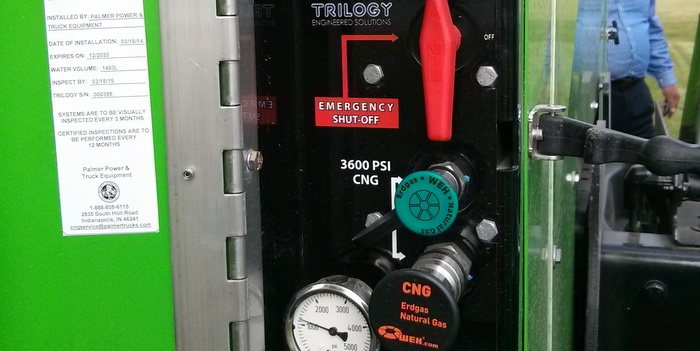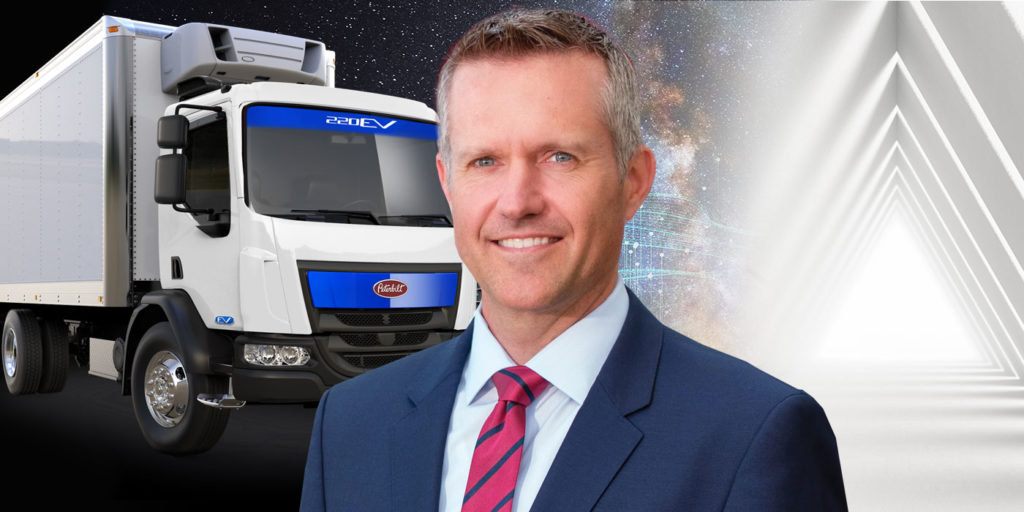If you’re a regular reader of this heavy-duty column, you’re likely starting to see an emerging theme: There is no one-size-fits-all, magic bullet solution to improving your fleet’s efficiency. It’s a collection of equipment integration, maintenance best practices and technology, working in concert to save money and boost the bottom line. Alternative fuels continue to offer viable solutions. While natural gas has been around for up to 20 years, it is just now gaining ground due to increased fueling infrastructure and overall fuel cost savings.
The success of the latest natural gas heavy-duty trucks is largely driven by the Cummins Westport ISX12 G engine, which makes it possible to run 80,000-lb. tractor-trailer combinations. Industry trends indicate a greater degree of natural gas penetration year over year, perhaps reaching 10% by 2020 within the Class 8 market, according to Roy Horton, Mack Trucks’ director of segmentation management.
CNG at a glance
At the Electric Utility Fleet Managers Conference in June, Nina Kisch, fleet administration manager for Transportation Services Pacific Gas and Electric Co., shared the following good news and bad news in terms of current compressed natural gas (CNG) vehicle usage.
Pros
- In recent years, 80% to 90% of the natural gas used in the United States was domestically produced.
- CNG and LNG are considered alternative fuels under the Energy Policy Act of 1992.
- CNG is trending at $2 per GGE.
- Compared with vehicles fueled by conventional diesel and gasoline, natural gas vehicles can produce lower levels of some emissions.
- A wide variety of new heavy-duty natural gas vehicles are available from U.S. OEMs.
- CNG conversions are readily available.
Cons
- Fueling infrastructure is the largest limitation.
- Still significant premium on capital purchase: $15,000 to $30,000 or more for a heavy-duty vehicle.
- Higher maintenance costs due to durability and parts availability. Lack of qualified technicians and service centers.
- Vehicles aren’t available in large quantities.
- Operator acceptance varies widely. Controls are needed to ensure that drivers of bi-fuel vehicles actually use CNG.
- Range limitation due to storage and density.
- Don’t have good price trends, with the assumption that it will stay low.
- Fuel storage space on the vehicle is an issue. CNG often requires us to build a bigger, less fuel efficient truck than diesel.
- CNG is practically equivalent to new clean diesel technology in terms of emissions. CNG doesn’t meet the definition of ZEV or low carbon fuel standard.
Additional fuel options
Natural gas isn’t the only game in town. For the vocational segment, diesel-electric hybrid technology is available and propane autogas vehicles continue to be an option. This year, three new medium-duty propane autogas vehicles came on the market, each made possible through co-funding through PERC: Freightliner’s Propane S2G and MT-45, Roush Clean Tech’s Ford F-650. When it comes to medium-duty, propane autogas is quickly becoming yet another strong alt fuel option for fleets that previously didn’t have access to the fuel because of lack of vehicle class engine offerings.
Let’s not forget about diesel. As Kenworth Truck Co.’s national sales manager for specialty markets, Andy Douglas, pointed out, diesel was an “alternative” fuel in the 1930s. “Did [diesel adoption] happen overnight? Absolutely not. That was about a 25-year transition for the industry moving toward diesel fuel as it’s used today,” he said. Diesel is clearly still the fuel of today, though how it is put to work has changed dramatically with new engine technology. With new emissions standards coming down the pike for vehicles beyond model year 2018 and further cuts in fuel use and greenhouse gases, diesel technology will take another evolutionary step, complete with its own challenges.
In a Clean Fuel Corner column series, Deena Kasavelu of Donaldson Co. Inc. emphasized the importance of clean diesel in advanced engines, and explained how it will impact fleet managers and owners.
“The sensitive nature of these latest-and-greatest engines—using high pressure common rail—to any dirt in the fuel will surely create challenges for end-users of this equipment, making the use of clean diesel fuel more critical than ever,” Kasavelu wrote. “The end user is responsible for ensuring that clean fuel is supplied to the equipment and juggling all of the diesel-engine related topics can be daunting: H2O; NOx; PM; sulfur; hydrocracking; catalysts; ultra low sulfur diesel (ULSD); additives; ISO Cleanliness; microns; high pressure common rail; Tier 4; etc. Use the experts that exist in the market to help you understand; ask questions and seek answers on all-things diesel.”
Be sure to check out the entire Clean Fuel Corner series.














